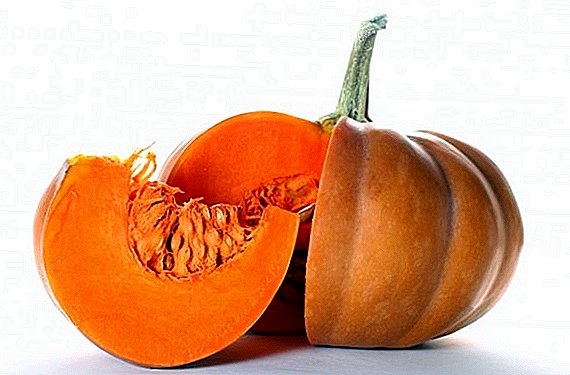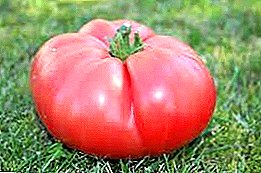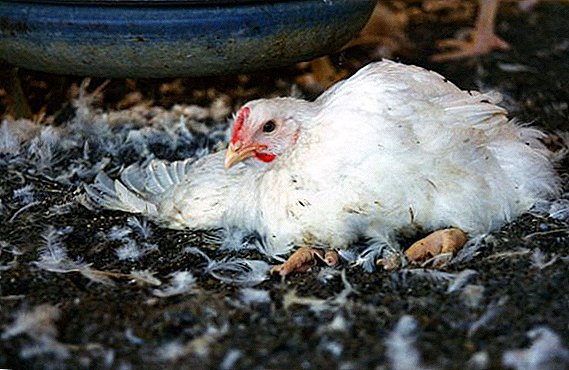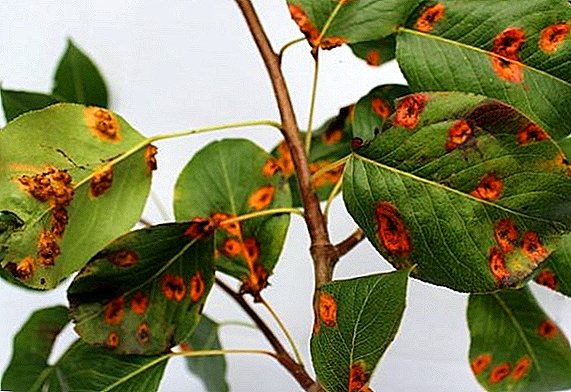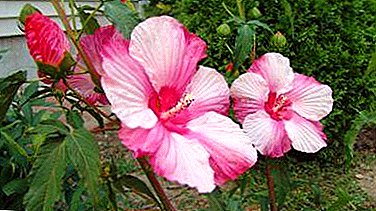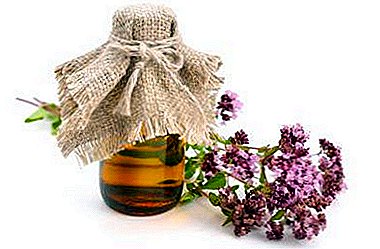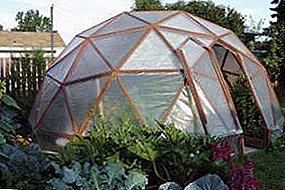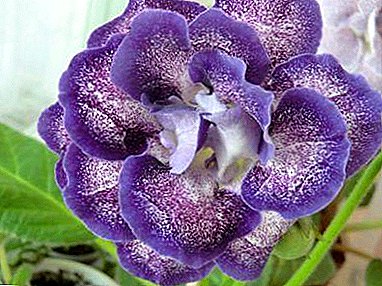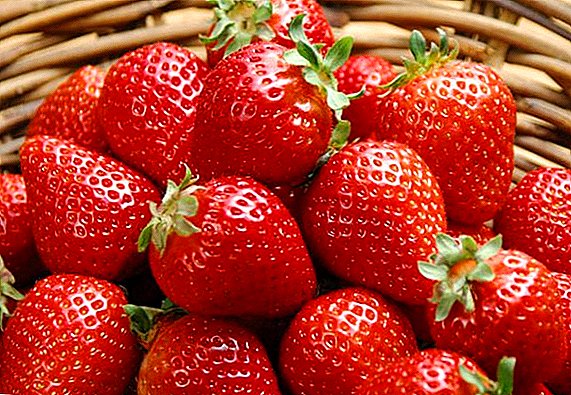 Strawberry varieties "Kimberly" is becoming increasingly popular among farmers and gardeners, primarily because of the relatively early ripening period, because it is the first fresh berries that appear on our table after a long winter - the most desirable, and, therefore, the most expensive.
Strawberry varieties "Kimberly" is becoming increasingly popular among farmers and gardeners, primarily because of the relatively early ripening period, because it is the first fresh berries that appear on our table after a long winter - the most desirable, and, therefore, the most expensive.
Description of strawberry varieties "Kimberly"
The homeland of this strawberry variety is the Netherlands, and its "parents" are the Chandler, a very large and hardy variety, which is also well known in our latitudes, and the variety Gorella, which is less known in our country.
Did you know? In fact, Kimberly - it's a strawberry, not a strawberry. Very few people understand the differences between these two plants, and even farmers selling fruits and seedlings, as a rule, call strawberries strawberries - sometimes adjusting to demand and avoiding unnecessary questions, and sometimes out of ignorance. Real strawberry - This is a completely different plant, which is quite rare, having small fruits, uneven color of berries and different-sex flowers.
"Kimberley" is a fairly large bush with a small number of round glossy leaves, slightly scattered to the side, and not elongated upwards. The berries are also large and glossy, conical, very fragrant and sweet, but without cloying.

Important! The undoubted advantage of the variety is the early ripening of the crop, but this strawberry, unlike other varieties, bears fruit only once a year.
With proper care from one bush can collect up to 2 kg of fruit. Of course, to achieve such results, it is necessary to be a true professional, but without much effort, a small Kimberley plantation will give the whole family the opportunity to enjoy plenty of fresh and tasty berries.
Planting strawberries "Kimberly" on the site
Strawberry "Kimberley" on the technology of planting and care is similar to other varieties of strawberries. In general, like all early varieties, this plant has a high frost resistanttolerates drought quite well.
And yet it cannot be said that this is an unpretentious culture. Under adverse weather conditions, the bush will survive, but the quality of the crop and the size of the berries will greatly decrease. All this and much more needs to be borne in mind when choosing a garden strawberry "Kimberley" for growing at his dacha.
How to choose strawberry seedlings when buying
Many have a question, how to choose strawberries for planting. After all, it often happens that lovingly planted seedlings simply do not survive the winter or refuse to bear fruit at all. To avoid this, it is worth remembering a few rules.

Did you know? The most important thing that should not be done is to purchase seedlings from strangers and in places not intended for this. Perfect option - Meet the farmer from whom you purchased the fruits you like and agree on the purchase of seedlings in advance.
Even if you follow this rule, look at the bushes you buy. It is desirable that the color of the leaves was monotonous and rich green, without any points or other damage, which may indicate that the bush is infected with a fungal infection.
It will not only prevent it from developing normally, but it can also infect other plants in your area. The presence of the disease signals the paleness of the leaves, and this sign is even more dangerous than the dark spots. As already mentioned, healthy strawberries "Kimberly" leaves are glossy.
Important! You can not buy seedlings, in which young leaves look faded and shriveled - This plant is sick!

If you buy seedlings without packaging, its roots should have a length of at least 7 cm. If the bush grows in a transparent cup, make sure that the roots fill the entire underground part. In any case, the roots should not be overdried - such a plant can not settle down.
If you have purchased "bare" seedlings and are not going to plant it today, store it in a container with water (this will not only save the plants from drying out, but also fill it with necessary moisture and facilitate rooting in a new place).
There are many delicious varieties of strawberries for example: Malvina, Festivalnaya, Marshal, Lord, Russian size, Asia, Masha, Queen Elizabeth, Elizabeth 2, Gigantella, Albion.
When and where to plant
There are two approaches to when you can plant strawberries in open ground: there are supporters of both autumn and spring planting. Here it is important to understand that high-quality seedlings of strawberries appear either immediately after the end of the cold, or, conversely, in the fall, when the heat begins to subside.

From this point of view, landing is possible from mid-April to the first decade of May or in August-September. In areas with a warmer climate, strawberries are planted in autumn in late September and even early October. At this time, it is still quite well accustomed and lets young leaves that do not burn in the hot sun.
The weather at this time is much milder than in summer, and more predictable, there are no more concerns on the site than in spring, which is why many gardeners prefer the autumn planting of this perennial.
Did you know? Strawberries "Kimberly"grown in a greenhouse, not as tasty as from the garden, so this variety is preferable to grow in open ground.
In favor of spring planting, you can bring the opportunity better. harden to frost. From this point of view, it is better to plant strawberries at the beginning of the season to residents of cool areas.

Any strawberry loves the sun, but Kimberley is particularly demanding on the amount of light. On the other hand, a place that is too open for sudden gusts of wind, for this plant is also poorly suited, and you should try to choose a protected area for the bed.
Important! Strawberries grow well in beds, located with a slight bias in the south.
The soil should not be depleted and pass moisture well. It is good that the soil contains sand and peat mixture.
Previously, you should carefully remove all remnants of other plants and weeds, including roots, and also, if necessary, disinfect the ground (it is advisable to do this in advance so that the poison does not destroy the young bushes).
Important! Tomatoes, eggplants, peppers and other solanaceous - bad predecessors for strawberries.

How to plant
Strawberry seedlings need to be planted at a sufficiently large distance from each other (approximately 30 cm). As you release new mustache, you will get a real dense bed of a couple dozen bushes for one or two seasons.
Did you know? The pits are dug deep enough so that after falling asleep the bushes are slightly below ground level. Firstly, this method will allow better retention of moisture, which the seedlings especially need in the first months after transplantation, and secondly, strawberry bushes tend to rise slightly upwards over time.
In each hole before planting, you can add a little ash, compost or humus. Placing a shrub in the hole, you should ensure that around the roots there was no air gap.
It is also important to ensure that the so-called growth point (relatively speaking, the place where the root ends and the stem begins) is at ground level. If you plant a bush too deep, he will rotand if you bare - will not survive the cold.
Immediately after planting, the bushes should be watered abundantly. When planting in the autumn, it is also recommended to cut off all the old leaves, leaving only the youngest ones, so that the extra green mass doesn’t draw off the strength of the loose plant. Pruning is best done when the water dries after the first watering, at the same time capturing the leaves “muddled” with dirt.

Strawberry Care Tips "Kimberly"
Caring for strawberries "Kimberly" is not so difficult, but as long as the plant is not well rooted, it will require a little more attention.
Watering, weeding and loosening the soil
Experienced gardeners know that from how you will water Strawberries, directly depends on the harvest. During the first 10 days after planting, young outlets must be watered every day (in the morning or in the evening), and after the water is absorbed, gently so as not to touch the roots, loosen the soil, preventing it from coming into a lump and start to crack.
Older bushes do not need such frequent watering, but when it is hot and the earth dries out, the plant's need for moisture cannot be underestimated. Simultaneously with watering you need to weed a bed, because weeds are removed much more easily from damp earth.

Fertilization
Feed the strawberries "Kimberly" need on average four times per season: immediately after the snow melts and the cover is removed, before flowering, during it, and finally, at the end of summer, in order to strengthen the plant before winter and prepare for the next fruiting.
Some farmers use a slightly different fertilization schedule: the third dressing is carried out after fruiting, and the fourth - in early October.
Strawberries need organic and mineral fertilizers. It is good to use for its cultivation compost, humus, mullein, carbamide or urea (for the first, early feeding), wood ash, as well as superphosphate or complex fertilizers containing phosphorus, potassium and nitrogen.

The role of mulch
Strawberries, especially during the fruiting period, get along very poorly with weeds, and also tolerate drying out of the soil. Mulching of the soil helps to solve this problem, so even if you are not a fan of this agrotechnical device, when growing strawberries it is worth resorting to it.
The right time for mulching is the period of active flowering, immediately after you have discovered the beginning of the formation of the ovaries.
There are many materials suitable for strawberry mulching. These are special films, and dark fabric, and improvised means — straw, dry grass or leaves, sawdust or conifer needles.
Important! Before using as a mulch, it is strongly recommended to dry the grass or straw very well in the scorching sun, so that all sorts of pests and weeds that may be in it die and cannot harm your garden bed.
It should also be borne in mind that sawdust and pine needles can be used on alkaline soil, since these materials increase the acidity of the soil.

Pest and disease control
Kimberley Strawberry is very important advantage: it is much smaller than other types of this berry, affected by powdery mildew, the main enemy of strawberries. But still pests and diseases do not always bypass this plant, so regular routine inspection of the beds is an indispensable element of strawberry farming.
In particular, from pathogenic fungi, Kimberly is susceptible to lesions with brown spot (the corresponding symptoms can be seen on the leaves of the plant), and among pests of berries, spider mites, nematodes, strawberry weevil are threatened.
A good preventive measure to combat such ailments is planting next to a strawberry bed or directly between individual bushes of ordinary garlic.
Did you know? Strawberries and garlic - magnificent neighbors, perfectly feeling themselves in each other's company.

Avoiding rot infection involves the timely removal of dry leaves and the absence of water stagnation in the roots. Since it is almost impossible to cure this disease, it is recommended to spray the bushes with a suitable fungicide before flowering (for example, the complex drug Topaz is well suited for this purpose).
When growing strawberries, you need to know all the nuances: dressing in the fall and spring, care during flowering and after harvesting.
Insecticides are commonly used against pests (say, "Flyoverm"), but at the initial stage of infection it is sometimes enough to treat the shrubs with soap and water. Unfortunately, the bush, struck by a nematode, is almost impossible to save.
Having found the symptoms of the disease (twisted leaves, irregular shape of berries, deformed and short stems), in order not to destroy the entire plantation, the diseased plant must be carefully dug up and removed from the site or burned.

Pruning strawberries
As mentioned above, after autumn planting young bushes need to be freed from old leaves. The same procedure is carried out with the bushes every year before the "closing of the season."
It is believed that such pruning strengthens the bush and increases the future harvest. However, this is not all. When the strawberries are harvested, the bushes should also be cut off, leaving only the stalks to encourage more active growth of young shoots.
Also, the cultivation of strawberries involves the regular removal of whiskers, otherwise all vital juices will go not to the berry, but to these lateral processes.
Did you know? If you want to multiply strawberries with a mustache, you need to do this only after the berry has sprouted, and choose only one, the strongest process, the rest mercilessly removed. Repeat whiskers (mustache of whiskers) are not suitable for breeding.
Experienced farmers recommend dividing the bushes into those from which the crop will be harvested, and those that will be used for breeding. Another option: to allocate one year only for the reproduction of strawberries, thus sacrificing the harvest.

The advantage and at the same time the lack of Kimberley strawberries (depending on what we want - to get a large plantation or to harvest more) is that, compared to other varieties, her mustache does not grow very quickly.
Preparing for the winter
Kimberley is a winter-hardy berry, but this does not mean that it can be safely left "to the mercy of fate" until the very spring.
Only those who are sure that there will be no problems with the amount of snow in the winter can afford not to cover strawberries for the winter. Under natural conditions, it is snow that does not allow the plant to freeze in winter and is the best protection for it.
But since climatic conditions today are characterized by extreme variability, it is not worth hoping for nature. Cropped strawberry bushes should be covered with agrofibre, coniferous or raspberry twigs and other material.
Important! Straw and logging foliage - bad shelter, since the pest larvae and rodents live well in them, so this shelter will do more harm than good. In addition, there is a danger that the plant will begin to rot with too much moisture and frequent thaws. Also can not be used for shelter dark film or cloth - this can also cause rot.

When using covering material, it is recommended to build small arches so that air remains between the bushes and the shelter. It is believed that this will save plants from even greater freezing. But the problem can be solved more simply: put plastic bottles between bushes, cover the garden bed with a canvas, and press down its edges with stones or other cargo.
Fulfillment of these simple rules ensures that at the end of spring on your table there will always be a bowl with large fragrant and very tasty caramel strawberries “Kimberly”.


